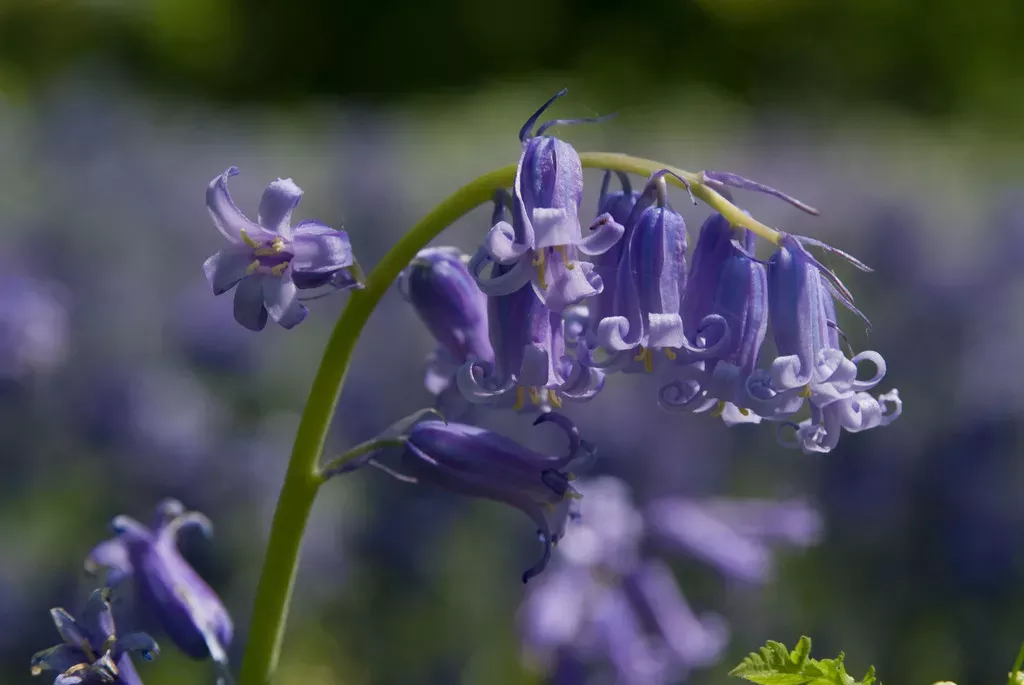1 December 2020
The dark side of the genome
Why do some plants have such large genomes? And what impact does it have?

While we have known the structure of DNA since 1953, our ability to interpret the genomic information it holds for understanding biodiversity has grown rapidly only in recent years.
Yet one aspect of the genome, which is the complete set of genetic information in an organism, has long puzzled scientists.
Why do genomes vary so much in size, with no apparent link between how much DNA a species contains in each cell (i.e. its genome size), and organismal complexity?
From the smallest to the largest plant genomes
In flowering plants, genome sizes range a staggering 2,400-fold, the largest range for any comparable group of organisms.
Genlisea tuberosa, a tiny little carnivorous plant, has a genome 50x smaller than our own. Paris japonica, a herbaceous monocot, on the other hand, has 50x more DNA in each cell compared to us humans.
In fact, P. japonica has the largest genome of any organism analysed.
Indeed, if we were to unravel the DNA from one cell of P. japonica it would be 100 m long, twice the height of the Pagoda at Kew, whereas our genome would only stretch 2 m!

The ever-increasing speed at which DNA sequence data can be generated has already provided deep insights into the composition, structure, expression and evolution of genes in the genomes of many species, including ourselves.
However, genes often comprise only a small percentage of the genome. In humans, our c. 23,000 genes make up just 2-3% of our total genome size.
So what makes up the rest of the genome?
Mysterious DNA
Much less is known about the DNA comprising the rest of the genome. Scientists sometimes refer to this DNA as ‘dark matter’ to reflect our lack of knowledge.
What we do know is that it includes repetitive DNA sequences which are composed of mobile elements, and other sequences, that have the ability to move around and multiply.
In our own genome these repetitive sequences are estimated to make up at least 50% of the DNA.
They can have a profound impact on the functioning and evolution of our genome through the generation of genetic diversity, as well as causing diseases such as cancers.

Decoding the dark matter
In plants, genome size affects how and where plants are able to grow, so analysing the repetitive sequences, which contribute to genome size variation, is important.
Research suggests that differences in the abundance of repetitive sequences reflect the balance between their ability to amplify and the rate at which they are removed from the genome. Nevertheless, nearly all of our understanding, so far, has come from studies of species with small genomes.
We therefore carried out an analysis of the ‘dark side’ of the genome, looking at species across nearly the full range of genome sizes encountered in plants.
Large genome, more repeats?
The results were surprising. We expected to see a correlation between genome size and repetitive sequences – the larger the genome, the more repeats, as seen in species with small and medium sized genomes.
Instead, we found that in genomes larger than 10 Gbp (i.e. c. 3x the size of the human genome), the abundance of repeats declined as the genome size increased.
Our results suggest this is due to a change in how repeats evolve in the genome depending on genome size.
Species with small and medium genomes (i.e. less than c. 10 Gbp), such as the strawberry, oak, and daisy, are characterised by dynamic genomes with repeats being amplified and deleted rapidly, potentially generating lots of genomic diversity upon which selection can act.
In contrast, species with larger genomes (i.e. greater than c. 10 Gbp), such as bluebells, snakes head fritillary and mistletoe, appear more sluggish in the rates at which they delete DNA.
A consequence is that the repeats become ‘trapped’ in the genome , where they mutate slowly over time until they have changed so much that they are no longer recognisable as repeats. So the genome expands and they may well be slowly moving towards extinction.

It is clear that genome size plays a role in influencing the evolution of species.
We know that genome size impacts several processes.
For example, plants with large genomes take longer to replicate their DNA and divide their cells, and are restricted to having bigger cells which result in lower rates of photosynthesis and altered patterns of water use efficiency.
This means that plants with big genomes are slow growing and are long lived. They may also be less efficient in putting on biomass or responding to water stress than species with smaller genomes.
Thus, it might not be surprising that species with giant genomes are frequently found among critically endangered plants, in part due to their more limited ability to adapt to changing environments compared with species with smaller genomes.
Read the paper
This study, was led by scientists at Queen Mary, University of London, Biology Centre CAS (Czech Republic), and the Royal Botanic Gardens Kew, and is published in the following paper:
Novák, P., Guignard, M.S., Neumann, P., Kelly, L.J., Mlinarec, J., Koblížková, A., Dodsworth, S., Kovařík, A., Pellicer, J., Wang, W., Macas, J., Leitch, I.J., Leitch, A.R. (2020) Repeat-sequence turnover shifts fundamentally in species with large genomes. Nature Plants 6: 1325–1329.



